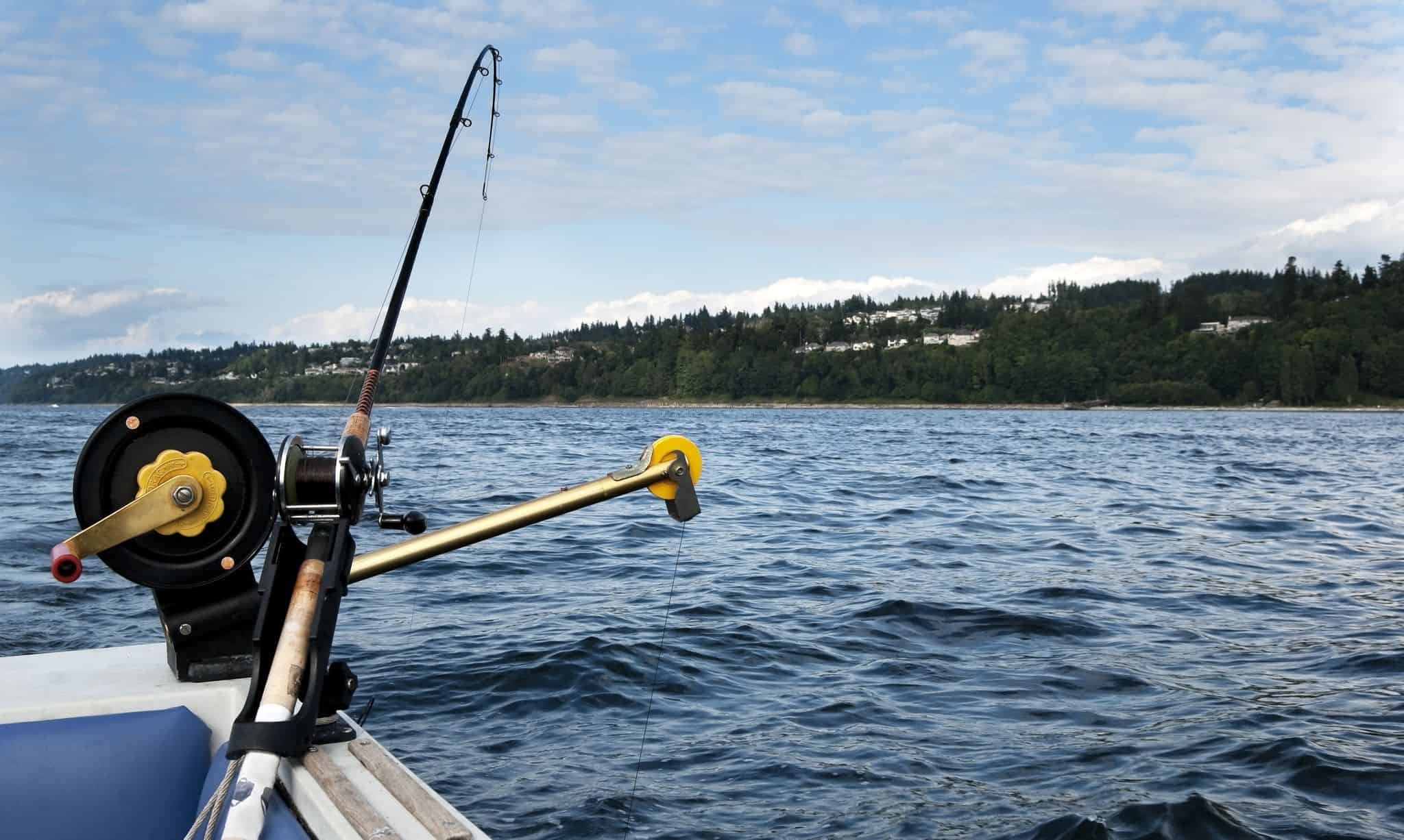One of the most effective ways to catch salmon is to go trolling. You can cover a lot of ground with your boat, getting your lure to reach the deeper swimming salmon. Trolling with downriggers is the most commonly used technique and an effective one at that!
But what if you have no downriggers? You might be wondering if you can still go trolling for salmon without downriggers.
Yes, it’s still possible! Read on to learn more about it.

Trolling for Salmon Without Downriggers
Admittedly, it’s a bit difficult to go trolling for salmon without downriggers. Downriggers make a fisherman’s life easier! That said, I’ve heard about fishermen garnering a lot of success when catching fish without downriggers.
Here are a few methods on how you can successfully do it:
1. With Divers
The commonly-used technique when you have no downriggers is to use divers. Divers will force the line and lure underwater as it applies downforce as you troll through waters.
Depending on the style and design of the diver, you can set the specific depth you want the lures to be at. You can use divers with meat or salmon trolling rigs.
2. With Weights
If you opt to skip divers, you can use traditional lead weights. The common weights to use are snap weights or in-line keel weights.
The keel weight has a keel built into its shape, keeping weight pointed in the right direction as you troll it through the waters. These weights are tied to the main fishing line about 6-8 feet from the lure. 6-8 ounce keep weights are the optimum choice when trolling at 30 feet deep or less.
The snap weights are another great option, which snap on your line, allowing you to adjust for the desired depth. The on and off abilities will enable you to remove it quickly when you have a fish on. The usual snap weight setup lets out about 50 feet of your line, attaches the snap weight, and releases another 50 feet of your line.
Check out this table to see what snap weight you need based on the weight size and speed:
| Weight Size | 1 MPH speed | 1.5 MPH speed | 2 MPH speed |
| ½ ounce | 10-15 feet deep | 5-10 feet deep | 1-5 feet deep |
| 1 ounce | 15-20 feet deep | 10-15 feet deep | 5-10 feet deep |
| 1.5 ounce | 20-25 feet deep | 15-20 feet deep | 10-15 feet deep |
| 2 ounce | 25-30 feet deep | 20-25 feet deep | 15-20 feet deep |
| 3 ounce | 30-35 feet deep | 25-30 feet deep | 20-25 feet deep |
When trolling deeper, it’s best to opt for a diver instead.
3. On the Surface
You can also opt to troll for salmon on the surface if you don’t want to use weights. This works efficiently for certain salmon species, though it depends on your location and the season.
For instance, hoochie squids are great to catch on the surface during the early parts of the Coho salmon season. Plus, smaller and aggressive Coho salmon would attack surface lures, making it enjoyable to catch as you use light tackle.
4. How Fast to Troll for Salmon?
Now that you know how to troll for salmon, the next question is how fast you should go for success. You shouldn’t troll too fast, as this can scare off fish or not have them interested in your bait. Fortunately, you don’t go too fast when you don’t troll with downriggers, anyway.
The best speed for trolling is around 1-2 mph for salmon, whether you use downriggers or not.
Wrapping It Up
If you thought trolling for salmon without downriggers was impossible, well, think again! There are simple and easy ways to troll without downriggers, all of which are affordable and will still get you good results. Just make sure that you brush up on your skills and be patient, and you’ll soon get a bite.
Hopefully, you learned a lot about trolling for salmon without downriggers! Learn more about fishing techniques and information on the fun sport around our blog now. Happy fishing and good luck!